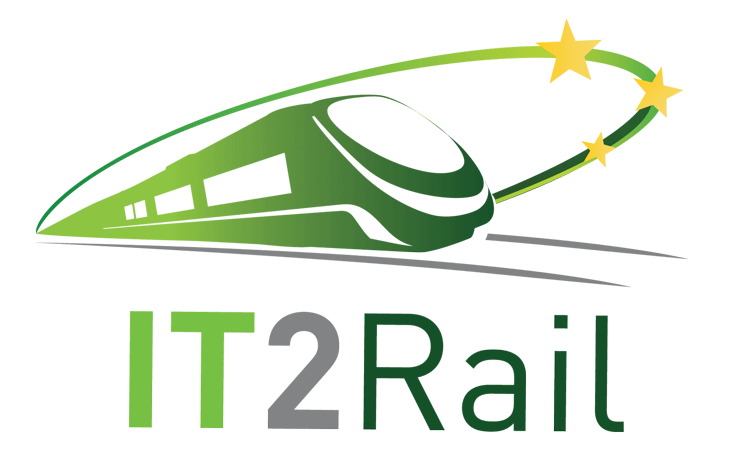IT2Rail: Transforming Real-Time Passenger Information and ticketing
Posted: 11 May 2016 | Stefanos Gogos | No comments yet
Today’s rail transport in Europe is not attractive enough to customers, especially for the new ‘connected’ generation. In particular, rail lacks multi-modal and door-to-door travel offers and there is limited interoperability between booking systems. A central objective of Shift2Rail (a Joint Undertaking – a form of Public-Private Partnership within Horizon 2020) is therefore to transform customers’ experience by improving all aspects of rail travel services. IT2Rail (Information Technologies for Shift2Rail) is one of the ‘lighthouse’ projects and as UNIFE Project Coordinator, Stefanos Gogos, explains, it is focused on developing a first suite of products to facilitate each stage of the customer’s journey, starting with its planning, and including the one-stop-shop purchase of travel tickets and the provision of information throughout a journey.


To deliver the vision of much more attractive rail transport, some key improvements are needed, including the following:
- Making the travel experience the ‘product’
- Ensuring a seamless end-to-end travel experience
- Enabling users to be connected through a user-centric approach
- Providing a consistent level of service
- Addressing the critical ‘first and last miles’.
The specific aims of the project and its follow-ups under the Fourth Innovation Programme (Passenger Services) of Shift2Rail are, therefore, to:
- Transform the European citizens’ global travel interactions into a fully integrated and customised experience
- Offer a ‘door-to-door’ multi-modal travel experience, through services integrated from multiple providers
- Help carriers and travel service providers to adapt their offers in order to better satisfy customer expectations and optimise their own operations.
To meet these aims IT2Rail – a 30-month €12 million project uniting the expertise of 27 partners from nine EU Member States – is adopting a radically new approach which is better suited to the successful delivery of such benefits to customers:
Placing the traveller at the heart of the experience
The conventional approach of designing systems based on operator capabilities and a second hand assessment of customer needs (viewed as system transactions) is replaced by focussing on the traveller at the heart of the experience. Therefore, a full set of modelled ‘personae’ is used to design components, interactions and human-machine interfaces that will be tailored to each customer’s preferences.
Interaction
The concept of seamlessness is extended beyond purely transport supply to encompass the full range of interactions between citizens; their digitalised work and leisure environment; devices including vehicles, smart cities and intelligent transportation systems; and the transportation network, all considered as an open-ended, self-sustained world of networked resources and services.
Simplifying complex systems
Complexity is reduced for travellers by providing the tools to construct a digital, customised, integrated and operable representation of the seamless transportation environment with which he/she interacts. This will ameliorate various factors that currently make the overall transportation system hard to understand, trust or use, particularly for citizens in an unfamiliar environment or with specific cultural, sensory or mobility constraints.
The key technical developments being pursued by IT2Rail are as follows:
Seamless travel
A booking and ticketing concept based on seamless travel across transport modes. The ultimate objective of Shift2Rail is to allow customers to book and pay – in ‘one-click’ – for a set of travel products for a complete multi-modal itinerary across different transport systems and operators (e.g. rail, urban, air) within Europe. Customers will instantly receive electronic embodiments of their travel rights in the travel companion (smart application) associated with their unique ‘traveller identifier’. These tokens will be readable by the relevant validation devices throughout their multi-modal journey using a smart device; for example, their smartphone. To reduce the complexity of the demonstration, IT2Rail will adopt simple use case examples.
One-stop-shop
A single ‘travel shopper’ application allowing multi-modal travel planning and integrating at least rail, urban, coach and air transportation offers in a ‘one-stop-shop’ mode. A first ‘feature-reduced’ implementation will facilitate travel shopping of regional, urban, rail and air itinerary combinations in co-modal fashion (one (set of) mono-modal product(s) = one embodiment).
Customer-tailored information
A set of trip tracking technologies designed to take the stress out of travel service disruptions, by providing customer-tailored information and ‘on-the-move’ rebooking of services across all the relevant modes, enriching the travellers’ experience.


The availability of efficient real-time information for a passenger during their journey can transform their experience in a positive way
Ticketing
IT2Rail aims to bridge the payment gap between long-distance and local transport modes, operators and travel products, allowing a ‘one-click’ shopping experience for integrated multi-modal door-to-door travel offers and validating their travel entitlements across different transport systems.
To this end, the project reviews key aspects of the current booking and ticketing environment to promote the wide introduction of virtual entitlements of travel rights and relevant tokens accessible securely by travellers, service providers and operators alike and loaded on appropriate devices readable by the validation means. The notion of the paper travel ticket will evolve toward the new concept of ‘Entitlement, Token and Embodiment’ (ETE), allowing easier travel combinations across the whole transport system.
Co-modal travel rights and services will be managed with full use of the travel companion at trip level for booking, purchase and ticketing, thus eliminating the inherent difficulties associated with purchasing the co-modal travel segments separately.
Users’ interaction will be shielded from the complexity and wide diversity of legacy transport systems, such as differences in local protocols, procedures, customs or physical facilities and unfamiliar access to validation and inspection devices.
Relying on interfacing mechanisms provided by the Interoperability Framework (the technical approach for jointly managing the various travel functional steps), the booking and ticketing services will ultimately contribute toward constructing a digital, customised, integrated and operable representation of a seamless transportation environment for the end-user. Specifically, the project work aims to:
- Deliver a Proof of Concept for multi-modal (air, rail, urban, coaches) booking and ticketing, demonstrating this via simple use cases in IT2Rail, but scalable for use in Shift2Rail IP4
- Create a dedicated booking and ticketing ontology (list of common semantic terms) for further integration in the interoperability framework. Common to all transport modes, this ontology will provide unique descriptions of key objects, roles and concepts for sharing within the multimodal booking and ticketing functions, whilst limiting impact on the existing systems
- Prepare the publication of global, open, scalable booking and ticketing specifications
- Specify, develop and implement ticketing back-offices in each of the four modes covered
- Integrate and test multi-modal ticketing functions across modes
- Provide and integrate the booking and ticketing environment for the pilot (IT and front-office equipment)
- Simulate, provide and support external datasets (from different service providers and use cases) for a pilot case testing.
Customer information
Improved customer information, to support all aspects of the service, is a fundamental part of IT2Rail, particularly during the travel shopping and trip tracking steps.
To support travel shopping the project aims to create the basis for the Travel Shopping Technical Demonstrator for Shift2Rail IP4. Its specific contributions are:
- Establishing the architecture to manage and aggregate distributed travel shopping data and distributed journey planning expertise
- Creating the basis for a one-stop-shop for co-modally marketed transport products and services whose combinations can answer door-to-door mobility queries
- Allowing the presentation of transport service attributes and facilities reflecting customer preferences about the carbon footprint and ‘reduced mobility’ needs
- Linking with the Interoperability Framework to overcome interoperability obstacles. This will reduce costs and enable comprehensive customer choice. It will also protect customers from message fragmentation and codification standards that make travel shopping difficult and risky in today’s fragmented travel marketplace.
The goal of the Trip Tracker – another new technical component of the IT2Rail solution – is to monitor irregularities in transport and respond to such anomalies in on-line mode, including making suggestions for alternative solutions. Up until now journey planners have focused on searching for the optimal connection that complies with planned timetables. Life, however, brings a large number of events that produce incidents or disruptions in transport. Often this means that a traveller cannot maintain the original travel plan and has to react to the new situation. A lot of inappropriate decisions are made because of insufficient information, or its late receipt.
After its activation by the user, the Trip Tracker sends the relevant information about all known travel conflicts that may affect the planned journey. Evaluating travel conflicts over the whole travel time, the system sends alerts to the traveller about the risks of deviation from original plans and offers alternative solutions, taking into account individual user preferences based on the Travel Shopper.
Information on events comes from diverse sources, including infrastructure managers of national railways and the central dispatching systems of individual railway undertakings. The information is relayed to the traveller by his/her Travel Companion – an individual smart device and data store which is also being developed within IT2Rail and is designed to give travellers control of their travel environment.
Therefore, the main objectives of the proposed solutions are to:
- Collect and analyse the on-line information on traffic irregularities (real-time data)
- Alert travellers on all relevant events concerning their planned itinerary
- Propose alternative solutions in reaction to such situations.


Issue
Related topics
Passenger Experience/Satisfaction, Passenger Information Systems (PIS), Rail Fares/Ticket Pricing, Real-Time Passenger Information (RTPI), Smart/Contactless Ticketing







